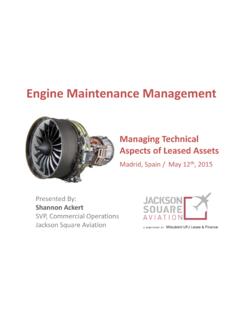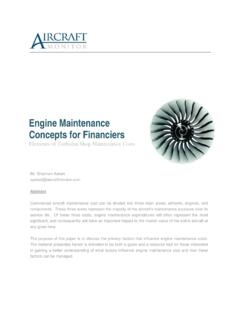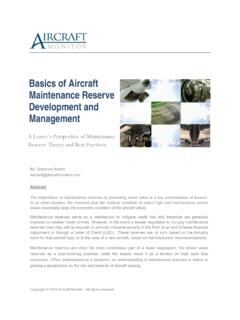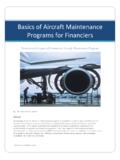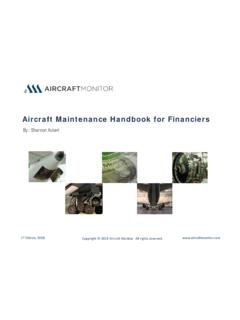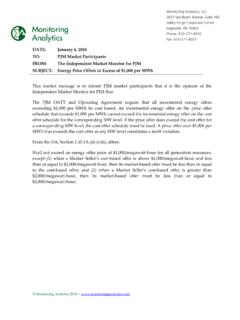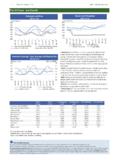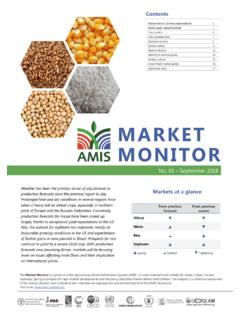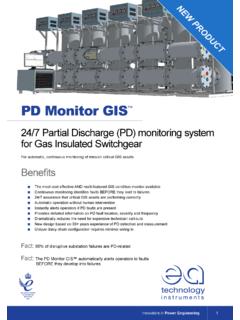Transcription of Basics of Aircraft Market Analysis - Aircraft …
1 Basics of Aircraft Market Analysis Forming a Policy to Identify Ideal Assets for Long-term Economic Returns By: Shannon Ackert Abstract Confidence in Aircraft transactions by investors depends critically on the objective assessments of those factors that influence its residual value over time. There are numerous Market and performance factors that determine how well an Aircraft retains its value as well as how successful its prospect for remarketing is. Aspects such as the number of an Aircraft in service, its firm backlog, geographical distributions, a broad & expanding customer base, position of the Aircraft on the product life cycle, specification, etc.
2 , should be considered during the Aircraft selection process. In addition to Aircraft Market and performance attributes, the outside influence of macroeconomic forces, such as demand in passenger air traffic and airline profitability, should also be considered. Indeed, the economic result from buying, selling, leasing and/or financing Aircraft will be greatly influenced by the timing of an investment and/or divestment in relation to the aviation cycle. This research examines those factors that influence an Aircraft 's value retention capability, and highlights how to gauge the aviation cycle as a means to benchmark the investment entry/exit point.
3 A. sample case study is included, which guides the reader through the Analysis and assessment of the Airbus A330-300, one of the most popular medium-long-haul widebody Aircraft . Basics of Aircraft Market Analysis TABLE OF CONTENTS. 1. INTRODUCTION .. 2. 2. Aircraft VALUES .. 2. 3. Aircraft VALUE RETENTION FACTORS .. 5. Aircraft Market -Driven Factors .. 5. Aircraft Performance-Driven Factors .. 11. 4 BENCHMARKING Aircraft VALUE RETENTION .. 14. 5 Aircraft VALUE CYCLES .. 15. 6 BENCHMARKING WHEN TO INVEST IN THE AVIATION CYCLE.
4 17. APPENDIX A: CASE STUDY A330-300 Market Analysis & COMMENTARY .. 19. APPENDIX B: Aircraft Market VALUE INDICATORS .. 26. 1 Version / March 2012 | Aircraft monitor Basics of Aircraft Market Analysis 1. INTRODUCTION. While both airlines and Aircraft investors value an Aircraft as an economic entity, the value in use to each differs considerably. An airline will analyze an Aircraft 's profit-generating potential where the value of the asset is justified based on the expected present value of the operating profits that the Aircraft is expected to generate over its life.
5 Analysis of the Aircraft 's Direct Operating Cost (DOC) per available seat mile, maintenance costs, dispatch reliability, and mission flexibility are also weighed in the decision framework. Fleet commonality will also play a significant factor given the substantial cost savings in training and spares inventories that can be achieved by operating a common fleet of Aircraft . In contrast, Aircraft investors derive their investment decision based on the expected present value of the lease income and the capital gains from the sale of the Aircraft .
6 The key risk factors in Aircraft leasing are credit risk and asset risk. Asset risk can be mitigated if Aircraft investors purchase assets that are readily financeable and saleable reflecting: Aircraft that can be transferred from one operator to another in an active, liquid and global Market , The value of the Aircraft does not decline substantially given a key component of the overall return is the residual value of the underlying Aircraft . Forming a policy to mitigate asset risk is crucial to Aircraft investors given they stand to lose a substantial portion of their potential profits if the value of their investments diminishes.
7 The ability to select assets having the greatest remarketing potential and exhibiting better than average value retention behavior is the critical first step towards building an Aircraft investment portfolio. This requires a comprehensive understanding of those qualities that enhance an Aircraft 's relative asset strengths. Another important criterion for maximizing return on invested capital is the ability to discern the optimal time to invest and/or divest in Aircraft assets. Benchmarking when to perform these activities requires consideration of the economic indicators that serve as entry and/or exit points in the aviation cycle.
8 2. Aircraft VALUES. An Aircraft 's value means different things to different people. An accountant will think of it in terms of book value, or the value recorded in the ledger. An Aircraft trader will consider it as the fair Market value. The standard Aircraft value terms used by the vast majority of Aircraft appraisers are defined by the International Society of Transport Aircraft Trading (ISTAT). The following is a representative sample of key definitions that conform to the standards set forth by ISTAT. A. Base Value (BV) - represents the opinion of the value of single Aircraft in a single arms-length transaction between a willing and informed buyer and seller with no hidden liabilities in a balanced Market .
9 A balanced Market is one where supply and demand are reasonably equal, and where neither is affected by short-term events. Short-term events generally include events that temporarily alter values such as, for example, extraordinary manufacturer price discounts, fuel costs, war or recessions. Aircraft monitor | Version / March 2012 2. Basics of Aircraft Market Analysis Base value then is a hypothetical value, as the real Market is never completely balanced or unaffected by short-term events, and it is generally used to analyze historical values or to project future values.
10 Importantly, base value assumes an Aircraft 's maintenance status is at half-life, or benefitting from an above-average maintenance status if it is new or fairly new. B. Current Market Value (CMV) - represents the appraiser's opinion of the most likely trading price that may be generated for an asset under Market conditions that are perceived to exist at the time in question. Market values are often value opinions based on each appraiser's careful Analysis of information about recent transactions. Current Market values also considers the perceived demand for the type, its availability on the Market , and further takes account of the expressed views of informed industry sources.

